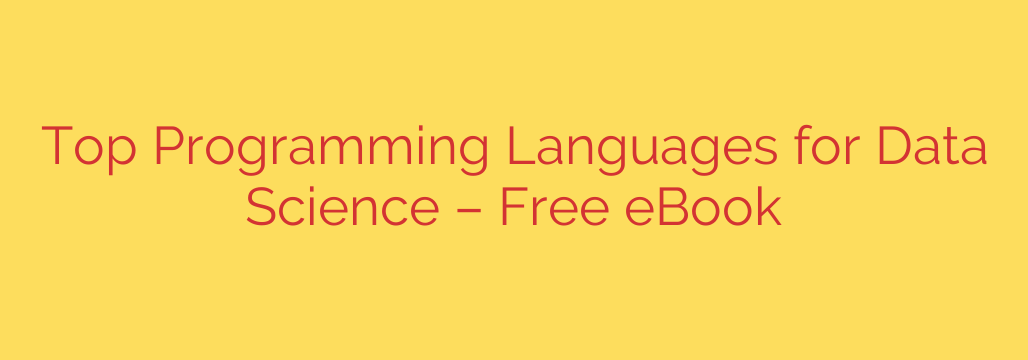
Mastering data science requires proficiency in key programming languages that serve as the bedrock for data manipulation, analysis, and model building. Understanding which languages are essential and why is crucial for anyone entering or advancing in this dynamic field.
Among the most prominent, Python stands out as incredibly versatile and widely adopted. Its extensive ecosystem of libraries like NumPy for numerical operations, Pandas for data manipulation and analysis, and scikit-learn for machine learning algorithms makes it a powerhouse. For deep learning, frameworks like TensorFlow and PyTorch are invaluable, further solidifying Python’s position at the forefront of data science. Its readability and large community support are significant advantages.
Another fundamental language is R. While Python is general-purpose, R was specifically designed for statistical computing and graphics. It excels in exploratory data analysis, complex statistical modeling, and generating high-quality data visualizations with packages like ggplot2. Many statisticians and researchers prefer R for its specialized capabilities and vast collection of statistical packages.
Beyond these two giants, SQL is non-negotiable. Data scientists must be able to interact with databases to retrieve, manage, and filter data effectively. Proficiency in SQL is essential for querying structured data, which is the starting point for most data analysis tasks.
For handling big data, languages like Scala are frequently used, particularly within the Apache Spark ecosystem. Scala’s conciseness and performance make it suitable for large-scale data processing. Java also plays a role, especially in enterprise environments and within the Hadoop ecosystem.
While perhaps less dominant currently, languages like Julia are gaining traction, especially for numerical computation, scientific computing, and high-performance tasks, offering speed comparable to compiled languages while maintaining the ease of use of scripting languages.
Choosing the right language often depends on the specific task, project requirements, and team expertise. However, building a strong foundation in languages like Python, R, and SQL provides a robust toolkit for tackling a wide range of data science challenges, from basic data cleaning to complex machine learning model deployment. The ability to leverage the strengths of different languages empowers data professionals to perform their tasks more efficiently and effectively, ultimately driving deeper insights and more accurate predictions.
Source: https://www.simplilearn.com/top-programming-languages-for-data-scientist-guide-pdf








